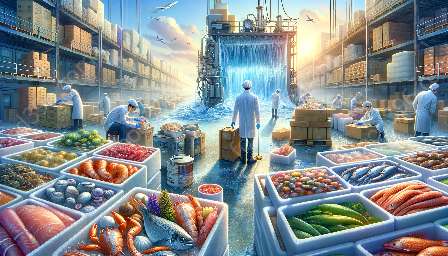Frozen storage of seafood is a critical aspect of the seafood industry, impacting both the quality and safety of the final product. In this comprehensive guide, we will delve into the science behind frozen storage of seafood, explore the best practices for packaging and storing seafood, and understand the key principles of seafood science.
Understanding Frozen Storage of Seafood
Seafood, being a highly perishable product, requires proper storage to maintain its quality and safety. Freezing is one of the most effective methods for preserving seafood, as it slows down the growth of microorganisms, enzymes, and chemical reactions that lead to spoilage. When seafood is properly frozen, its freshness, texture, and flavor can be preserved for an extended period of time.
The Benefits of Frozen Storage
One of the major benefits of frozen storage is the ability to extend the shelf life of seafood, allowing it to be distributed and consumed over longer periods. This not only reduces food waste but also enables the availability of seafood beyond its peak season, benefiting both producers and consumers.
Seafood Packaging and Storage
Effective packaging is crucial for maintaining the quality of seafood during frozen storage. The packaging must provide adequate protection against physical damage, freezer burn, and oxidation. Vacuum sealing, modified atmosphere packaging (MAP), and cryogenic freezing are some of the common methods used for packaging seafood to ensure its quality and shelf life.
Best Practices for Packaging and Storage
Proper handling and packaging techniques are essential to ensure that seafood maintains its quality and safety throughout the frozen storage process. This includes rapid chilling of seafood to minimize the formation of ice crystals, using moisture-resistant and airtight packaging materials, and labeling packages with clear information about the content and freezing date.
Seafood Science Principles
Seafood science encompasses various disciplines, including microbiology, chemistry, and food engineering, all of which play a crucial role in understanding the behavior of seafood during frozen storage. The science behind seafood storage involves studying the impact of temperature, moisture, and packaging materials on the quality and safety of seafood.
Conclusion
Understanding the science behind frozen storage of seafood and its packaging methods is essential for ensuring the availability of high-quality seafood to consumers. By following best practices and leveraging seafood science principles, the industry can maintain the freshness and safety of seafood, ultimately benefiting both producers and consumers.

